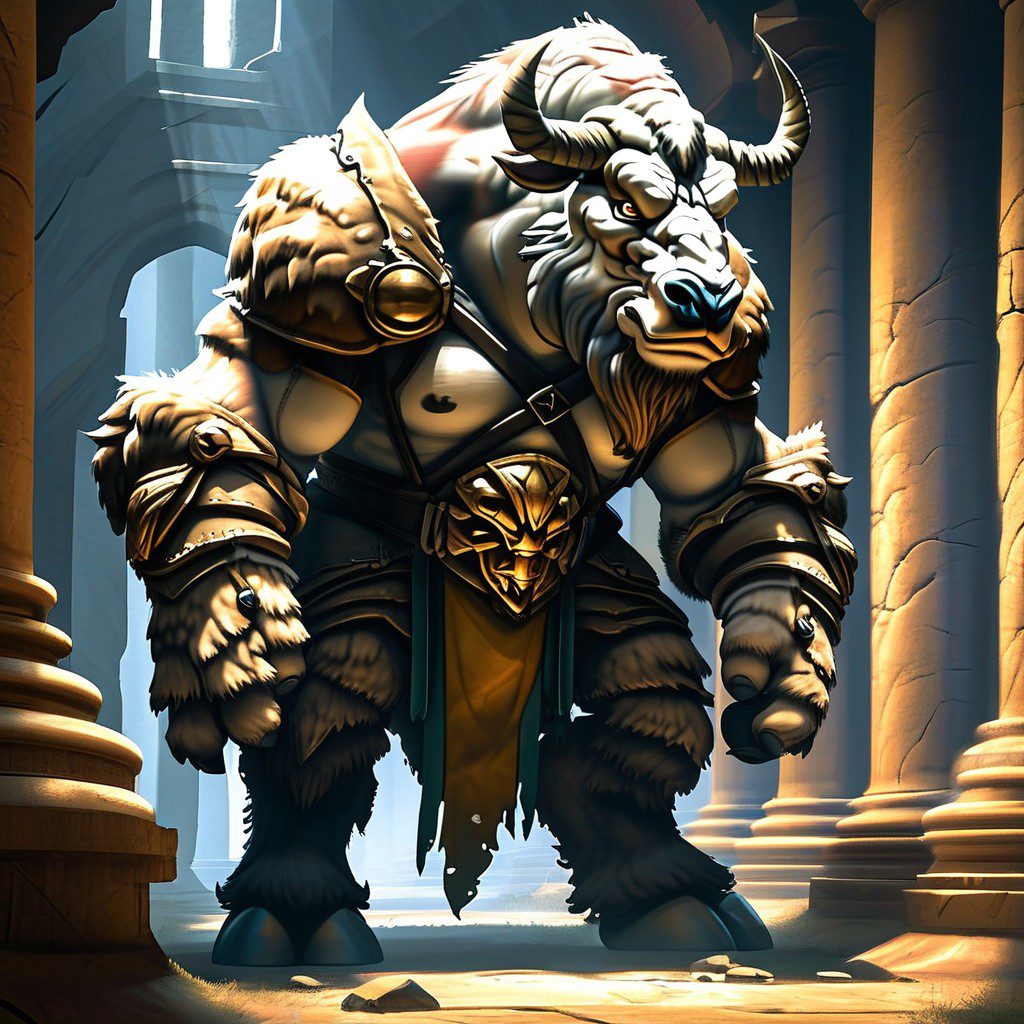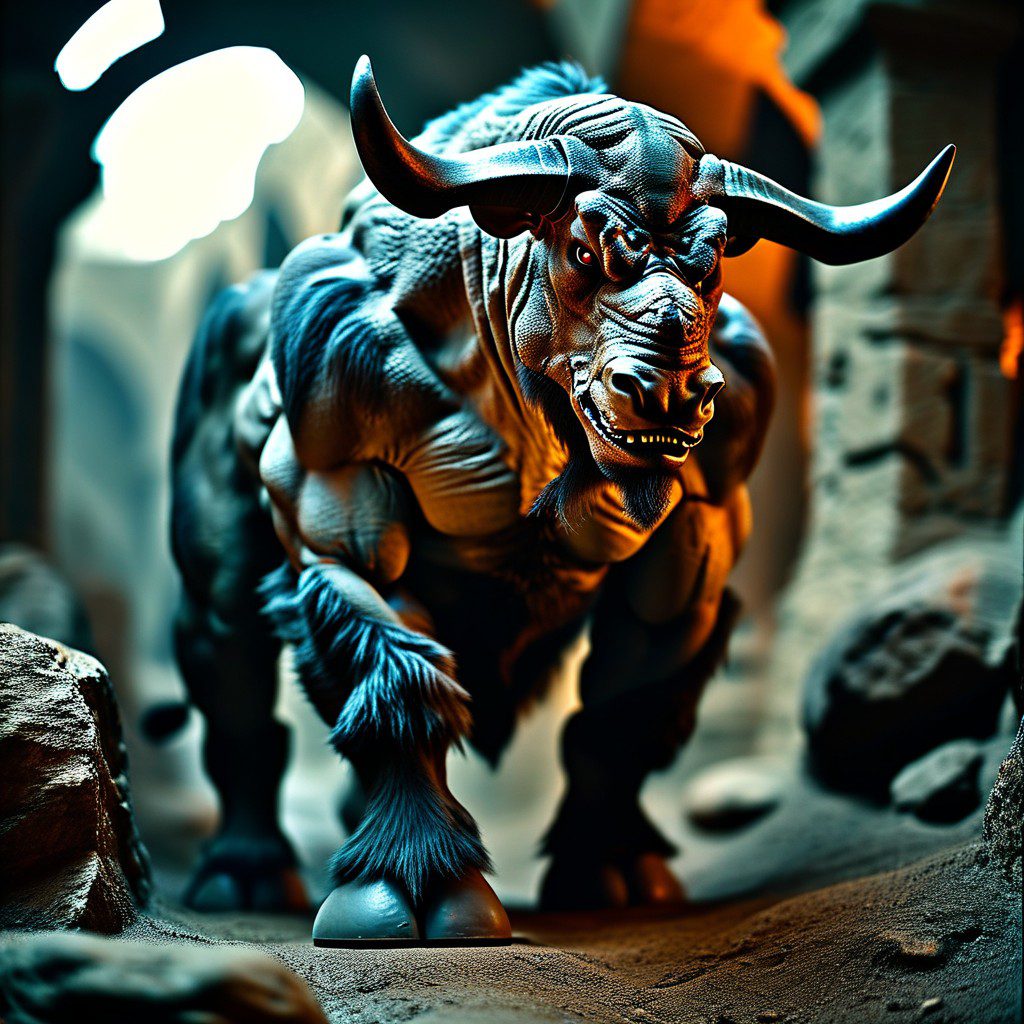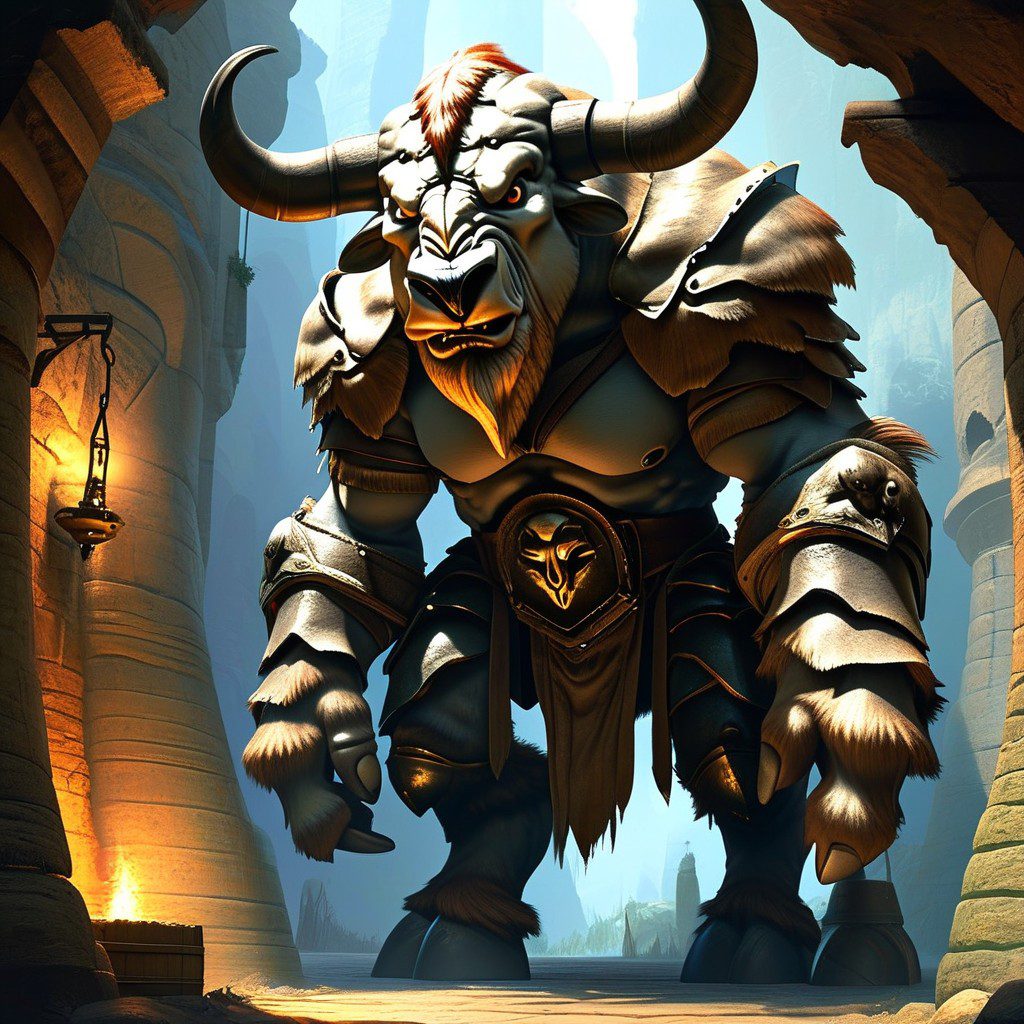The Minotaur: From Myth to Modern Legend

The Minotaur, with its monstrous fusion of human and bull, is one of the most iconic figures in Greek mythology. A symbol of primal power, trapped violence, and dark mystery, the Minotaur has been both feared and pitied throughout the ages. Whether lurking in the labyrinth or charging into battle in modern adaptations, this creature captures our fascination with the monstrous and the human, the known and the unknown.
In this blog, we will explore the mythological origins of the Minotaur, the significance of its role in ancient Greece, and how it has endured in modern media. From mythology to video games, the Minotaur’s presence remains as imposing as ever.
Origins of the Minotaur: Myth and Meaning
The tale of the Minotaur is deeply rooted in the mythos of ancient Crete and Athens. To understand the Minotaur, we first need to dive into the lives of the gods and kings whose actions brought it into being.
The Cursed Birth of the Minotaur


The Minotaur’s story begins with King Minos of Crete, the son of Zeus and Europa. Minos desired to rule Crete, but to prove his divine right to the throne, he needed the favor of the gods. He prayed to Poseidon, the god of the sea, to send him a sign of support. Poseidon sent a majestic white bull, which Minos was meant to sacrifice in honor of the god. However, Minos, entranced by the bull’s beauty, chose to spare it and instead sacrificed a lesser bull, hoping to deceive the gods.
Poseidon, enraged by Minos’s disobedience, decided to punish him in a most unusual and grotesque way. He caused Minos’s wife, Pasiphaë, to fall madly in love with the bull. Overcome by this divine madness, Pasiphaë enlisted the help of the skilled inventor Daedalus, who constructed a hollow wooden cow in which she could hide to mate with the bull.
The result of this unnatural union was the Minotaur—a creature with the body of a man and the head of a bull. The Minotaur’s monstrous appearance was a reflection of its unnatural birth, embodying chaos, lust, and punishment from the gods.
The Labyrinth: The Minotaur’s Prison
As the Minotaur grew, it became more violent and uncontrollable. Unable to kill the creature (likely out of fear of divine retribution), Minos sought another solution. He commissioned Daedalus to construct the Labyrinth, an elaborate, inescapable maze beneath his palace at Knossos, to imprison the Minotaur.
This monstrous labyrinth was as much a symbol of the Minotaur’s complexity as it was a physical prison. The Labyrinth represents confusion, entrapment, and the dangers of venturing into the unknown. In many ways, the Minotaur within it became an emblem of repressed violence and unresolved conflict.
The Tribute of Athens and the Heroic Theseus
The Minotaur’s myth takes a darker turn when it becomes entwined with the history of Athens. After a devastating war with Crete, the city of Athens was forced to pay a gruesome tribute to King Minos: every nine years, seven Athenian youths and seven maidens were sent to Crete to be sacrificed to the Minotaur.
The hero Theseus, prince of Athens and son of King Aegeus, could no longer bear this injustice. Determined to end the suffering, he volunteered to be one of the tributes, vowing to kill the Minotaur and end the monstrous cycle.
Theseus, however, knew that killing the Minotaur would not be enough—he also had to escape the labyrinth. Ariadne, the daughter of Minos, fell in love with Theseus and secretly gave him a ball of thread (known as the “clew”) to help him find his way out. Unraveling the thread as he ventured deeper into the Labyrinth, Theseus eventually confronted the Minotaur and, after a fierce struggle, killed the beast with his bare hands or a sword (depending on the version of the myth).
Theseus’s triumph marked the end of Crete’s dominance over Athens, and he returned home as a celebrated hero. But the Minotaur’s death also symbolized something more profound—the defeat of man’s primal, animalistic urges by reason and civilization. The maze, the monster, and the hero’s victory are metaphors for humanity’s struggle to master its own darker instincts.
The Minotaur in Ancient Art and Culture
In ancient Greece, the Minotaur’s story was widely known and frequently depicted in art, pottery, and sculpture. The image of Theseus slaying the Minotaur became a favorite motif, representing the triumph of order over chaos, reason over savagery, and civilization over barbarism.
Crete itself, where the myth was born, has long been a source of fascination. The archaeological discoveries at Knossos, particularly the ruins of the Minoan palace, suggest that there may be some historical basis for the legend. The sprawling complexity of the palace, combined with its association with bulls (the Bull-Leaping Fresco is one of the most famous examples of Minoan art), likely contributed to the idea of a labyrinth and a bull-headed monster.
The bull was a sacred animal in Minoan culture, often associated with fertility and power, making it both a natural and symbolic choice for this myth. The Minotaur, then, may be a way of expressing the fear and reverence the ancient Cretans felt for the forces of nature and the gods.
The Evolution of the Minotaur in Modern Media
The Minotaur’s myth has endured for millennia, but in modern times, it has been reinterpreted and reimagined in various ways. From literature to video games, the figure of the Minotaur has become a symbol of inner conflict, monstrous transformation, and the labyrinthine complexities of the human mind.
Literature and Films
The Minotaur has made numerous appearances in modern literature, often serving as a symbol of entrapment and existential struggle. Jorge Luis Borges, in his short story “The House of Asterion”, gives us a unique perspective by telling the Minotaur’s story from the creature’s own point of view. In Borges’s version, the Minotaur is not a monstrous villain but a lonely, tragic figure, misunderstood and imprisoned by his fate.
In C.S. Lewis’s Chronicles of Narnia, the Minotaur is one of many mythological creatures who populate the world of Narnia, but unlike its tragic mythological counterpart, the Minotaur in Narnia is a warrior and a servant of evil.
In film, the Minotaur has appeared in various adaptations of Greek mythology, most notably in “Jason and the Argonauts” (1963) and the “Clash of the Titans” series, where it continues to serve as a fearsome and powerful opponent for heroes to conquer.
The Minotaur in Video Games
The Minotaur has also charged its way into the realm of video games, often portrayed as a powerful adversary or boss-level monster. In games like “God of War”, “Assassin’s Creed: Odyssey”, and the “Persona” series, the Minotaur is often depicted as a mighty, nearly unstoppable beast that players must defeat to progress.
These video game versions of the Minotaur emphasize the creature’s raw strength and dangerous cunning, often blending its mythological roots with modern ideas of what makes a monster formidable. But more than just a brute, the Minotaur’s presence in games often plays on the idea of the labyrinth as well, with players needing to outsmart and navigate their way through complex environments just as Theseus did.
The Minotaur as a Symbol of Inner Struggle
In modern psychology and literature, the Minotaur is often used metaphorically to represent inner turmoil, the monstrous side of human nature, or the feeling of being trapped by one’s circumstances. The labyrinth becomes a symbol for the human mind, with the Minotaur as the embodiment of our deepest fears or repressed desires.
For instance, in Steven Sherrill’s novel “The Minotaur Takes a Cigarette Break”, the Minotaur is reimagined as an immortal creature living in the modern world, struggling to find his place in society. The novel explores themes of alienation, loneliness, and the search for meaning, using the Minotaur as a metaphor for the human condition.
The Strengths and Weaknesses of the Minotaur
Across various portrayals, the Minotaur’s strengths and weaknesses are shaped by its dual nature—a blend of human intelligence and monstrous power.
Strengths:
- Superhuman Strength: The Minotaur is almost always depicted as possessing incredible physical strength, often overpowering opponents with sheer force.
- Endurance: As a creature of both man and beast, the Minotaur often has impressive stamina, able to survive in the labyrinth for years without visible sustenance.
- Ferocity: The Minotaur is relentless in battle, driven by animalistic rage and instincts, making it a fearsome opponent.
Weaknesses:
- Lack of Strategy: Despite its brute strength, the Minotaur is often portrayed as lacking in intelligence, particularly in combat, where it relies more on raw power than strategy.
- Isolation: The Minotaur’s confinement in the labyrinth symbolizes its separation from the rest of the world, leaving it vulnerable to loneliness and despair.
- Vulnerability to Heroes: In most versions of the
The Enduring Appeal of the Minotaur
Why does the Minotaur continue to captivate us? Perhaps it’s because this creature represents so much more than just a monster in a maze. The Minotaur embodies our fears of being trapped—whether physically, emotionally, or mentally. It’s a symbol of the chaos within us all, of the primal urges that can drive us to destruction. And yet, there’s also something tragically human about the Minotaur, a creature born of divine punishment, living in isolation, and ultimately defeated by a cunning, mortal hero.
The story of the Minotaur reminds us of the thin line between the civilized and the monstrous, between order and chaos. As long as we wrestle with these questions, the Minotaur will continue to haunt our stories, reminding us that deep within every labyrinth, there’s a beast waiting to be confronted.
And as Theseus taught us, every labyrinth can be escaped—if we’re brave enough to face the monster within.
